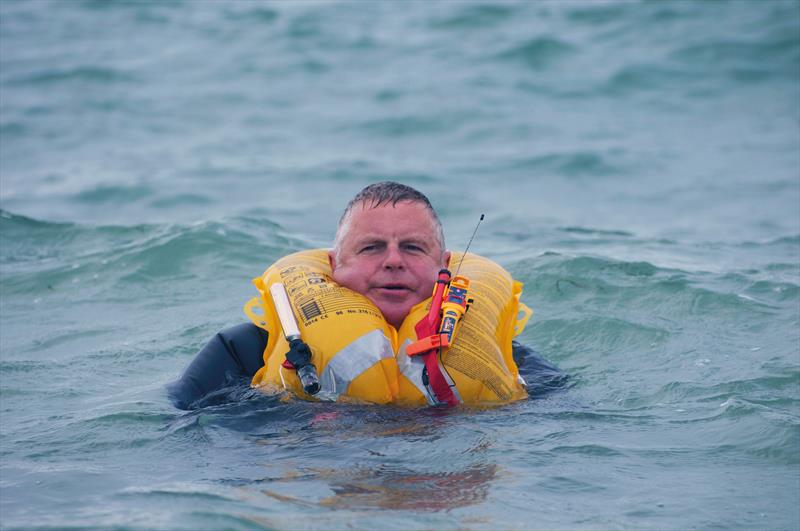
World Sailing institutes rule requiring crew to carry personal AIS for Category 2 Races
by Saltwater Stone 17 Sep 2018 20:50 NZST
17 September 2018

The Ocean Signal rescueME MOB1 with AIS and DSC © Ocean Signal
As sailors prepare for the 2019 season, awareness is being raised about a rule within the 2018-19 World Sailing Offshore Special Regulations requiring every crew member to carry a personal AIS device when taking part in Category 2 yacht races of extended duration, even if much of the route is close to shore.
Events covered by the rule include RORC races, such as the Rolex Fastnet Race as well as the recently completed Sevenstar Round Britain and Ireland Race, in which all participants carried devices such as the rescueME MOB1.
The Portable Equipment section 4.22.3 of the World Sailing Offshore Special Regulations (OSR) 2018-19 stipulates mono and multihull boats in Category 0, 1 and 2 races (MoMu0,1,2) have an AIS MOB for everyone on board. Enhancing chances of survival for a man overboard, these devices are automatically triggered when a life jacket is inflated, transmitting an alert to all AIS receivers and AIS-enabled plotters in the vicinity.
The annually-released safety regulations apply to upcoming Category 2 races including the 50th anniversary Rolex Middle Sea Race, around Sicily and surrounding islands in October and the 2019 Rolex Fastnet Race in August. Category 2 events in France include the Normandy Channel Race in May and the Mini Fastnet in June. Personal AIS was also among requirements introduced to raise safety standards for the latest Volvo Ocean Race 2017-18 edition and Clipper 2017-18 Round the World Yacht Race, in which the award-winning rescueME MOB1 with integrated AIS and DSC was carried by all competitors.Designed specifically to suit racing conditions, the Ocean Signal device can be fitted to the latest racing lifejackets, like Ocean Safey's Kru range, carried in a pocket or fitted to a growing number of foul weather jackets that feature personal MOB pockets, without hampering movement.
In the event of a person falling into the sea, the rescueME MOB1 is automatically triggered the moment the life jacket is inflated, sending the first alert within 15 seconds. The device transmits an alert to all AIS receivers and AIS-enabled plotters in the vicinity, with the integrated 66-channel GPS ensuring accurate position data is sent back to the boat and any other assisting vessels for at least 24 hours. Secondly, the MOB1 will activate the DSC alarm on the vessel's VHF radio to alert fellow crew members. The integrated strobe light with moulded lens ensures the survivor is easily spotted in poor light conditions.
The rule requiring personal AIS devices for Category 2 races was unanimously approved at World Sailing's Special Regulations sub-committee in November, after it was raised by the French delegation. Putting forward the French Sailing Federation's proposal, Christophe Gaumont cited an incident from the 200-boat ArMen Uship Race of May 2017 off the coast of Brittany, when a man fell overboard while dealing with a twisted spinnaker in the dark hours of the early morning. Luckily, he was carrying a personal AIS locator and his signal was detected by another vessel, ensuring he was recovered safely at least five minutes before his own boat was able to return to his position. Writing about his rescue, the sailor described his personal AIS as "a providential tool".
The rules state that crew in Category 0 races also carry a PLB (Personal Locator Beacon) equipped with 406Mhz and 121.5Mhz which trigger satellite-based alerts to MRCCs, such as the Ocean Signal rescueME PLB1 or ACR Electronics ResQLink+ PLB.
The World Sailing Offshore Special Regulations (OSR) govern offshore racing for monohulls and multihulls, structural features, yacht equipment, personal equipment and training.